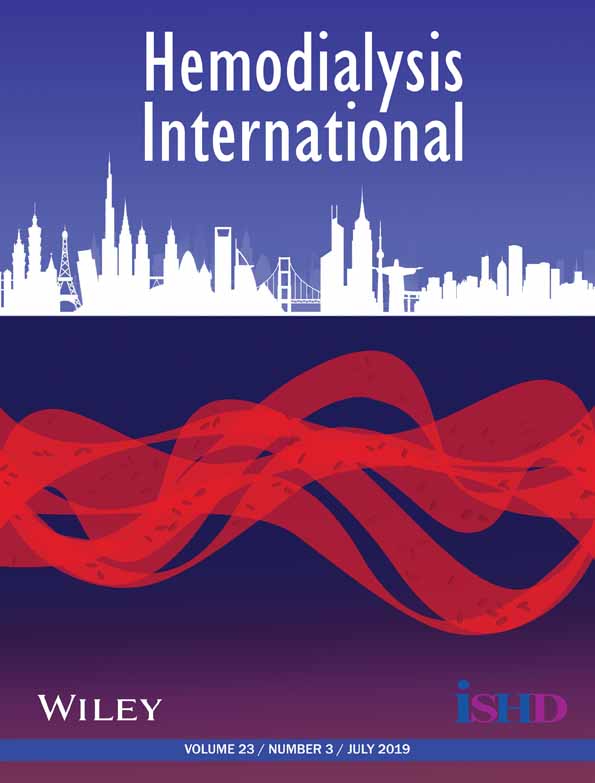The association of overhydration with chronic inflammation in chronic maintenance hemodiafiltration patients
Abstract
Introduction: Achieving euvolemia is one of the major challenges when treating end-stage renal disease (ESRD) patients receiving maintenance renal replacement therapy. Fluid overload is recognized as an independent predictor of mortality in ESRD, but its association with chronic inflammation is less well explored especially in chronic maintenance hemodiafiltration.
Methods: We performed a cross-sectional study of 87 prevalent ESRD patients receiving chronic maintenance hemodiafiltration (vintage 66.5 ± 57.1 months) with bioimpedance analysis to characterize the degree of percent overhydration (OH%). We also compared the levels of inflammatory markers, including C-reactive protein (CRP), serum albumin, neutrophil/lymphocyte ratio (NLR), and hemoglobin red cell distribution width (RDW) for the overhydrated (OH% ≥ 15%) versus euvolemic (OH% < 15%) groups. Linear regression analysis was performed to explore relationships between the degree of OH and inflammatory indicators.
Findings: The cohort represented an all-European population with a mean age of 60.9 ± 14.7 years and prevalence of diabetes mellitus of 27%. The entire cohort's OH% was 14.9% ± 5.1% (range −11.1% to 39.0%); further, the <15% group of patients’ OH% was 8.0% ± 8.5% versus 20.9% ± 5.1% in the OH% ≥ 15% group (P < 0.0001). Forty-seven patients (53%) were overhydrated by traditional criteria (OH% ≥15%) and 20 patients (23%) were severely overhydrated (OH% > 20%). The euvolemic (OH% <15%) versus severely overhydrated (OH% > 20%) groups had significant differences in markers of inflammation: CRP (9.8 ± 10.6 vs. 21.5 ± 21.6 mg/L, P < 0.006), serum albumin (37.6 ± 02.9 vs. 34.5 ± 5.3 g/L, P < 0.004), and NLR (3.06 ± 1.25 vs. 3.92 ± 2.04; P < 0.004). On linear regression, significant correlations were found between OH% and CRP (r = 0.2899, P < 0.006), serum albumin (r = −0.3670; P < 0.0005), RDW (r = 0.2992; P < 0.005), and NLR (r = 0.2900; P < 0.006).
Discussion: In a prevalent hemodiafiltration cohort, OH was common and correlated with several inflammatory markers.




